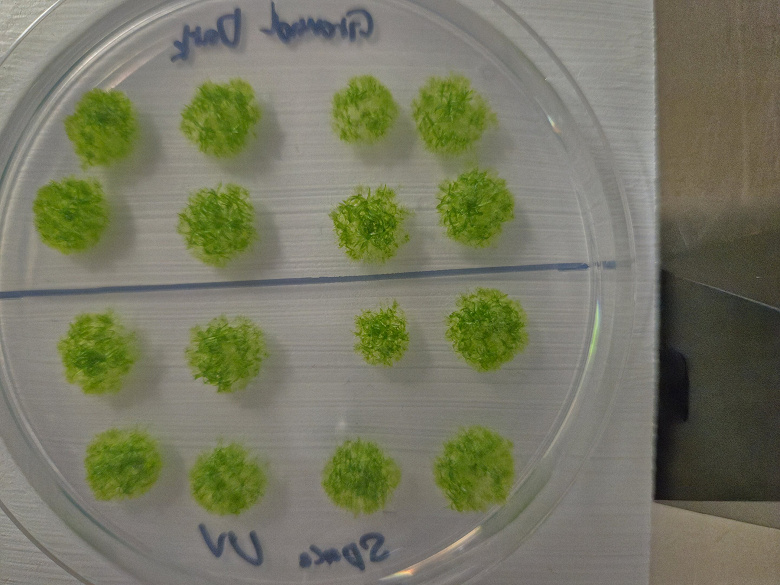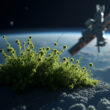Mosses are renowned for their ability to adapt to the harshest conditions on Earth. Inspired by this resilience, scientists sent moss sporophytes-structures containing spores-beyond the planet to test their endurance in space. Results showed that over 80% of the spores survived after 9 months outside the ISS, retaining their capacity to reproduce. This constitutes the first evidence that one of the earliest land plants can withstand prolonged exposure to the cosmic environment.
“Most living organisms, including humans, cannot survive even briefly in the vacuum of space,” says lead author Tomomichi Fujita from Hokkaido University. “However, moss spores retained their viability after nine months of direct exposure. This is a stunning testament to the Earth’s life forms possessing intrinsic cellular mechanisms that enable them to endure space conditions,”
For the experiment, Fujita’s team used Physcomitrium patens-a type of moss frequently employed in scientific studies. Various parts of the moss, including protonema cells (specialized stem cells formed under stressful conditions) and sporophytes, were exposed to conditions mimicking the space environment: high ultraviolet (UV) radiation levels, extreme temperatures, and vacuum.

Experiments revealed that sporophytes were the most resilient. They exhibited a 1000-fold greater resistance to UV radiation compared to protonema cells. The spores also survived and germinated after exposure to -196°C (-321°F) for a week and 55°C (131°F) for a month. Scientists believe that the protective coating of the spores acts as a UV-absorbing barrier, safeguarding the spore’s interior from damage. It’s likely an evolutionary adaptation that allowed mosses, belonging to the bryophytes group, to transition from aquatic to terrestrial environments around 500 million years ago and endure several mass extinctions.
In March 2022, moss spores were sent to the ISS aboard the Cygnus NG-17 spacecraft. Astronauts secured samples outside the station, where they remained for 283 days, exposed to space. In January 2023, the moss returned to Earth aboard SpaceX CRS-16 for further study. Upon returning to Earth, more than 80% of the spores remained viable, with nearly all successfully germinating under lab conditions. Scientists also measured chlorophyll levels in the spores and found that except for a slight reduction in chlorophyll a (by 20%), a pigment vital for photosynthesis, the spores’ condition barely changed.
Further enhancing this research, scientists hypothesized that with proper protection, moss spores encapsulated in sporophytes might survive space conditions for up to 5600 days, about 15 years. The authors hope their research will inspire studies on the feasibility of cultivating plants on other planets and utilizing mosses to establish agricultural systems in space.
“Ultimately, we hope this work will usher in a new era for creating ecosystems in extraterrestrial environments like the Moon and Mars,” Fujita notes. “I hope that our study of moss serves as a starting point,”









